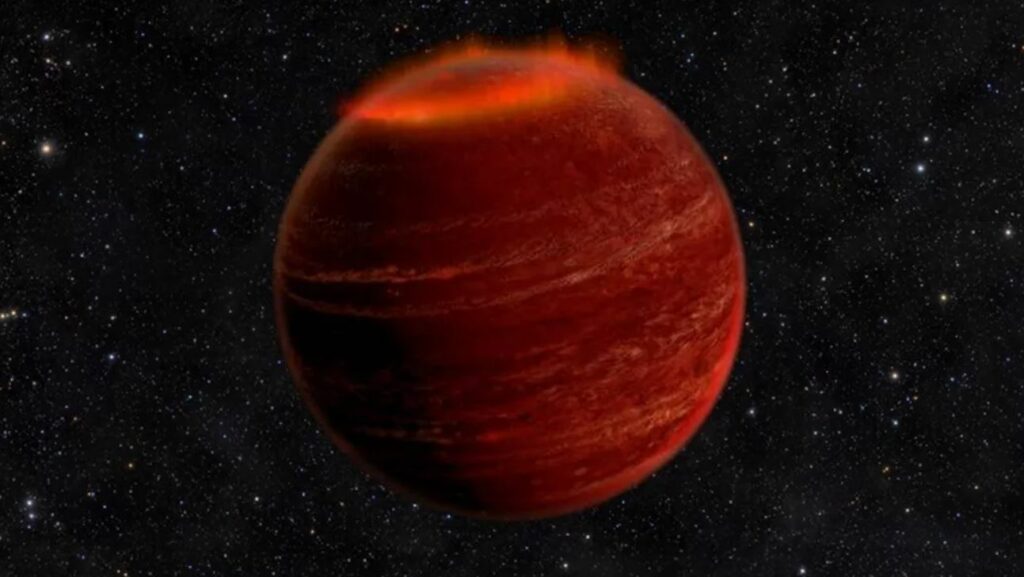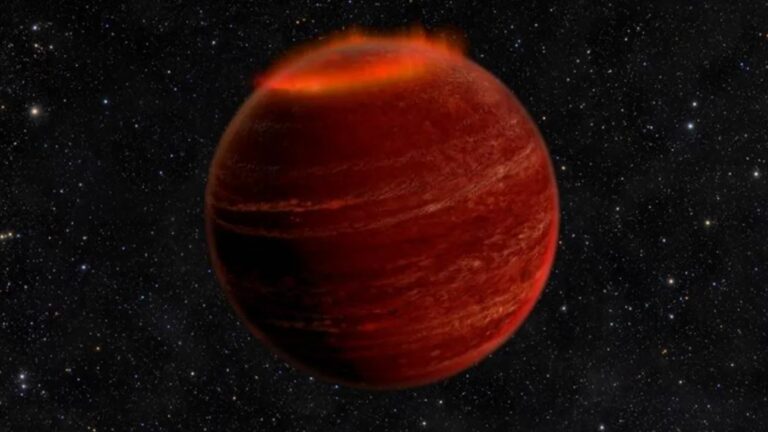Unusual Celestial Object, Hotter Than the Sun, Zooms Around a Distant Star with Remarkable Velocity
A remarkable celestial entity has emerged, perplexing astronomers as it blurs the distinction between stars and planets.
Designated as WD0032-317B, this enigmatic phenomenon is classified as a brown dwarf—a luminous gaseous “protostar.” Brown dwarfs typically possess atmospheric compositions akin to Jupiter but exhibit sizes ranging from 13 to 80 times larger. At these dimensions, these entities commence hydrogen isotope fusion within their cores. However, they lack the necessary mass to sustain the full-fledged fusion process that powers conventional stars like our sun; instead, they resemble smoldering charcoal rather than a vigorously burning wood-fired oven.

Ordinarily, brown dwarfs radiate at around 4,000 degrees Fahrenheit (2,200 degrees Celsius), a rather cool temperature compared to most stars, which reach surface temperatures of approximately 6,700 degrees Fahrenheit (3,700 degrees Celsius).
WD0032-317B, situated 1,400 light-years away from Earth, deviates from the typical brown dwarf characteristics. In a study presented on the arXiv preprint database and subsequently accepted by Nature Astronomy, scientists measured the celestial object’s surface temperature and made a startling discovery—it blazed at a blistering 13,900 degrees Fahrenheit (7,700 degrees Celsius). This scorching heat causes the molecules in its atmosphere to disintegrate into constituent atoms, surpassing the surface temperature of our sun by several thousand degrees.
Such extreme temperatures defy conventional expectations for a brown dwarf. However, researchers unveiled the role played by the star it orbits. WD0032-317B maintains an extremely close proximity to its companion, an ultra-hot white dwarf star, resulting in an exceptionally short orbital period of merely 2.3 hours. This intimate connection leads to tidal locking, wherein one side of the brown dwarf permanently faces the star while the opposite side remains in perpetual darkness, as reported by Science Alert.
Consequently, only one side of the brown dwarf experiences intense heating; while its “day side” temperature reaches 13,900 degrees Fahrenheit, the “night side” remains relatively balmy at 1,900 to 4,900 degrees Fahrenheit (1,000 to 2,700 degrees Celsius). Such a stark temperature contrast represents the most extreme variation observed on a substellar object, according to the researchers. However, these conditions will not endure indefinitely, as the brown dwarf’s molecules continue to disintegrate, leading to its gradual erosion by the host star.
Study of entities like WD0032-317B promises to enhance scientists’ comprehension of how hot stars gradually consume their companions. Additionally, it contributes to the expanding knowledge surrounding the specific conditions required for stars to ignite.
Do not forget to share your opinion with us to provide you with the best posts !




0 Comments